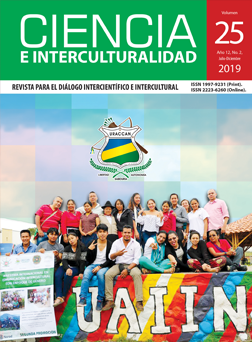Prácticas Comunicacionales desde las Vivencias Familiares del Pueblo Afrodescendiente
Resumen
El pueblo creole ha persistido de una u otra forma en un contexto multiétnico, ha podido conservar su cultura, transmitir su idioma, sus costumbres y tradiciones. Recuerdan que ha sido una ardua tarea para sus ancianos y ancianas. El hecho de convivir en una región diversa culturalmente les ha dificultado la transmisión de la lengua originaria pero cada uno de esos obstáculos han sido superados, porque en medio del entorno familiar se han fortalecido las prácticas comunicacionales ancestrales. Con este estudio se describen parte de estas prácticas que han perdurado en el seno de las familias creoles de los municipios de Siuna, Rosita y Bonanza en la Región Autónoma de la Costa Caribe Norte de Nicaragua. Se comparten tradiciones, costumbres, creencias, símbolos y tipos de comunicación que tuvieron y tienen estas familias donde están inmersos los relatos de señores y señoras mayores de edad pertenecientes al pueblo afrodescendiente, originarios del Caribe Sur de Nicaragua y que por décadas han permanecido en la costa caribe norte del país, región donde construyeron y potenciaron sus propias prácticas familiares, costumbres y tradiciones ancestrales.
Descargas
El autor mantiene los derechos morales y permite la cesión gratuita, exclusiva y por plazo indefinido de sus derechos patrimoniales de autoría a la Universidad de las Regiones Autónomas de la Costa Caribe Nicaraguense (URACCAN).






